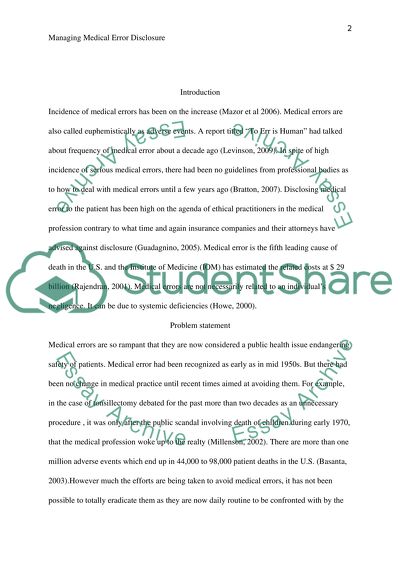Cite this document
(Managing Medical Error Disclosure Term Paper Example | Topics and Well Written Essays - 3456 words, n.d.)
Managing Medical Error Disclosure Term Paper Example | Topics and Well Written Essays - 3456 words. Retrieved from https://studentshare.org/health-sciences-medicine/1570549-managing-medical-error-disclosure
Managing Medical Error Disclosure Term Paper Example | Topics and Well Written Essays - 3456 words. Retrieved from https://studentshare.org/health-sciences-medicine/1570549-managing-medical-error-disclosure
(Managing Medical Error Disclosure Term Paper Example | Topics and Well Written Essays - 3456 Words)
Managing Medical Error Disclosure Term Paper Example | Topics and Well Written Essays - 3456 Words. https://studentshare.org/health-sciences-medicine/1570549-managing-medical-error-disclosure.
Managing Medical Error Disclosure Term Paper Example | Topics and Well Written Essays - 3456 Words. https://studentshare.org/health-sciences-medicine/1570549-managing-medical-error-disclosure.
“Managing Medical Error Disclosure Term Paper Example | Topics and Well Written Essays - 3456 Words”, n.d. https://studentshare.org/health-sciences-medicine/1570549-managing-medical-error-disclosure.


